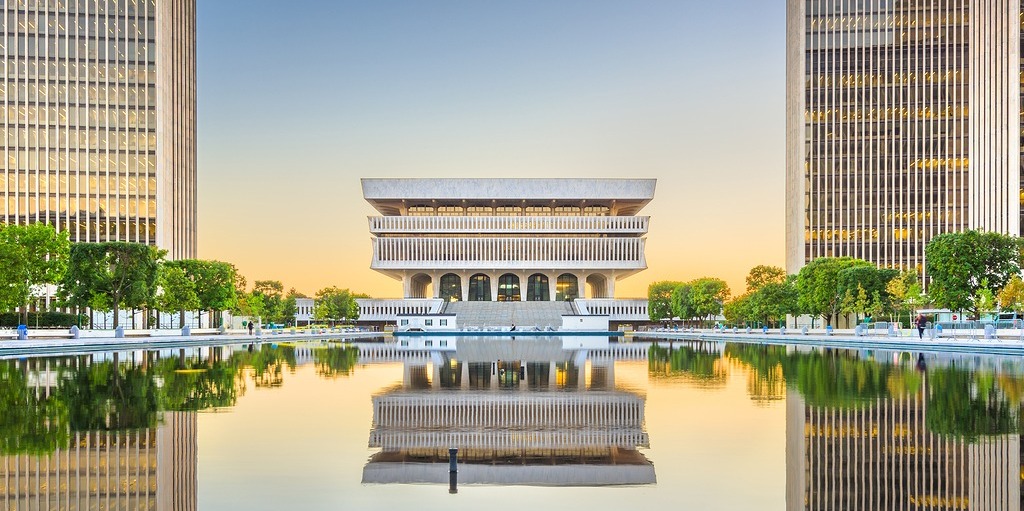*updated August 19, 2019
Since 2003 New York State has modeled its construction regulations on the International Building Code (IBC) and the 14 other supplemental standards the International Code Council (ICC) manages. These guidelines, collectively called the I-Codes, encompass numerous structural design best practices meant to promote quality commercial and residential development and thereby ensure tenant health and safety.
The NYS Department of State, Division of Building Standards and Codes is currently reviewing the latest version of the I-Codes, published in 2018. This is a key event for architects, builders and developers navigating the Empire State, all of whom must adjust their processes to make sure their projects are compliant with state law.
Tracking the creation of the I-Codes
The ICC released the inaugural IBC in 1997. The organization, which included only American structural design experts, created the code by combining and refining the standards from three separate regional organizations that developed construction codes used across the U.S.
The ICC published the first compilation of international codes in 2000, which featured 10 of the current 15 I-Code titles — these covered both residential and commercial building regulations including everything from property maintenance, mechanical, fuel gas and plumbing to swimming pool installation, private sewage disposal, energy conservation and zoning. The current complete set of I-Codes includes the following:
- Building Code
- Existing Building Code
- Energy Conservation Code
- Private Sewage Disposal Code
- Property Maintenance Code
- Fire Code
- Plumbing Code
- Fuel Gas Code
- Residential Code
- Green Construction Code
- Swimming Pool and Spa Code
- Mechanical Code
- Wildland-Urban Interface Code
- Performance Code for Buildings and Facilities
- Zoning Code
Within three years of the first compilation of I-Codes, New York State adopted seven of the I-Codes and is striving to update them every three years in accordance with the ICC revision schedule.
Understanding the changes to come
Some of the more significant code modifications include but are not limited to the following:
- Classification of Accessory Storage Spaces 9 (Section 311.1.1): "Regardless of size, storage rooms and spaces that are accessory to other uses are to be classified as part of the occupancy to which they are accessory."
- Medical Gas Systems (Section 427): "In order to provide a more comprehensive and efficient compilation of construction regulations, those IFC medical gas system requirements related directly to building construction have now been replicated in the IBC."
- Higher Education Laboratories (Section 428): "Higher education laboratories using hazardous materials can now be considered Group B occupancies provided such laboratories comply with new Section 428 which provides an alternative approach to the existing control area provisions."
- Occupant Load Calculation in Business Use Areas (Section 1004.8): "The method of calculating occupant load in business areas has been revised which will typically result in reduced design occupant loads. However, higher design occupant loads can now be assigned to concentrated business areas such as telephone call centers and similar uses."
- Corridors Adjacent to Elevator Hoistway Openings (Section 3006.2.1): "Elevator hoistway openings must be protected per Section 3006.3 where the elevator opens directly into a fire-resistance-rated corridor. Opening protection shall consist of an enclosed elevator lobby, additional door(s) or pressurization of the hoistway."
- Deck Live Load (Table 1607.1): "Table 1607.1 is now consistent with the provisions in the 2010 and 2016 editions of ASCE 7 for minimum uniformly distributed live loads on decks and balconies by increasing the deck live load to one and one-half times the live load of the area served."
The occupant load calculation adjustment (Section 1004.8) is perhaps one of the more significant changes here, as it will revise the business load factor to one person per 150 square feet and change bathroom and egress requirements. This adjustment could drastically alter project plans, forcing architects to recalculate features such as stairwell and doorway measurements and bathroom counts. With this I-Code revision and dozens of others in play, architects, builders and developers would be wise to seek assistance from code and zoning specialists who know the I-Codes in and out.
Here at Milrose Consultants, we staff such talented professionals — true code and zoning experts like John James Secreti, RA, NYS CEO, LEED AP — who can help you take on development challenges of all kinds, from project-specific struggles to roadblocks related to industry-wide sea change.
Connect with Milrose today to learn more about our expert code consulting and zoning work.








